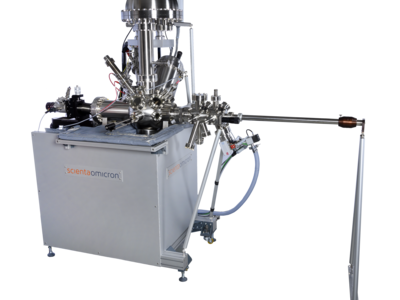Charge Compensation
Many surface science techniques are based on the emission of charged particles from the examined samples. For example, in case of photoelectron spectroscopy, electrons that are emitted from the sample due to the photon irradiation process are collected an analyzed. However, since these photoelectrons carry negative charge, their absence in the sample would cause a positive charge build-up on the sample itself. In particular non-conductive samples require charge compensation techniques to balance this effect. In this case, an electron gun is used to shoot electrons at the sample and thereby compensate the charging effects during the measurement.

